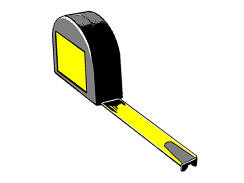 I recently came across an interesting alert from the Honigman firm regarding patent term adjustment. On 1 November 20120 the Eastern District of Virginia issued the first court decision involving the United States Patent and Trademark Office (USPTO) calculation of patent term adjustment.
I recently came across an interesting alert from the Honigman firm regarding patent term adjustment. On 1 November 20120 the Eastern District of Virginia issued the first court decision involving the United States Patent and Trademark Office (USPTO) calculation of patent term adjustment.Patent term adjustment
A patent cannot be enforced until it is issued. The usual term of a United States patent is 20 years from the filing date rather than the issue date. So if there is any delay in the examination process the patentee ends up with less than 20 years within which to enforce a patent.
By way of compromise, the USPTO is obliged to issue US patents within three years of filing. If the patent does not issue within this timeframe then the patentee is entitled to a patent term adjustment as a remedy.
There are three types of patent examination delays. These are:
- "A Delays" where USPTO fails to comply with various statutory deadlines
- "B Delays" where USPTO fails to grant a patent within three years of the patent application filing date
- "C Delays" arising from administrative actions such as interferences, secrecy orders and appeals.
The effect of filing an RCE
In Exelixis, Inc v Kappos the patentee sought review and correction of patent term adjustment granted by the USPTO. Exelixis filed a national phase entry application on 15 January 2008. They received a final Office Action and filed a Request for Continued Examination (RCE) on 11 April 2011.
The USPTO issued a patent with a PTA award of 368 days. This was made up of 344 days of A Delays plus 85 days of B Delay minus 61 days of applicant delay. The USPTO reckoned that accrual of B Delay terminated upon the filing of the RCE. So they awarded the applicant 85 days of B Delay instead of 199 days.
Exelixis argued that if an RCE is filed after the three-year period commenced on the application filing date, the UPSTO should extend the patent term one day for each day of delay until the patent issues.
The Court found for Exelixis and awarded the patentee the patent term adjustment they were asking for. In a nutshell this means that an RCE will have no impact on patent term adjustment after the three year deadline has passed. We are still within the appeal period. It will be interesting to see whether the USPTO challenges this one.
Photo courtesy of author G & A Sattler under Creative Commons licence.
No comments:
Post a Comment